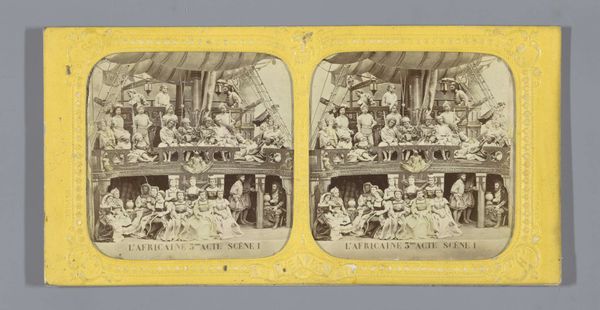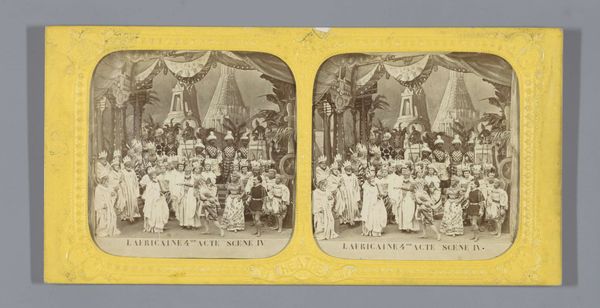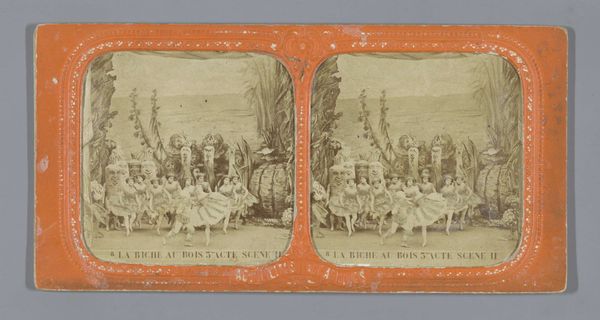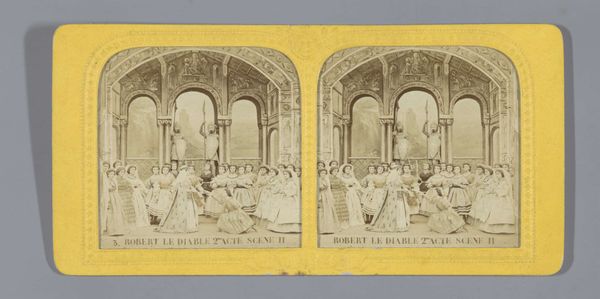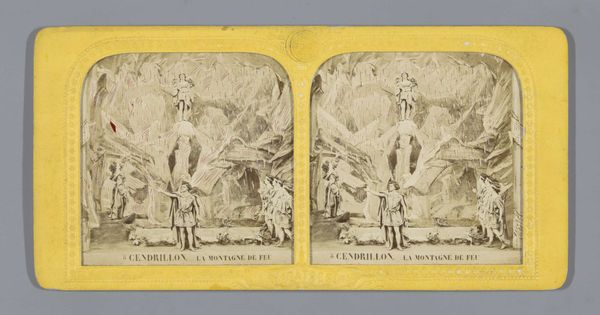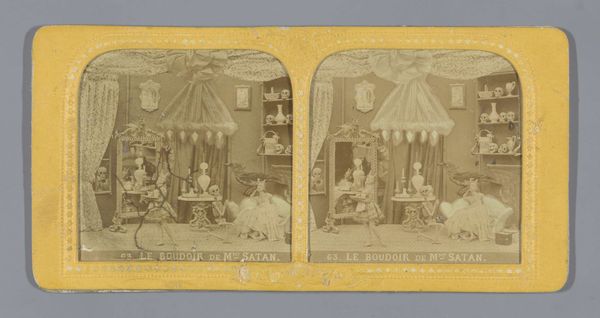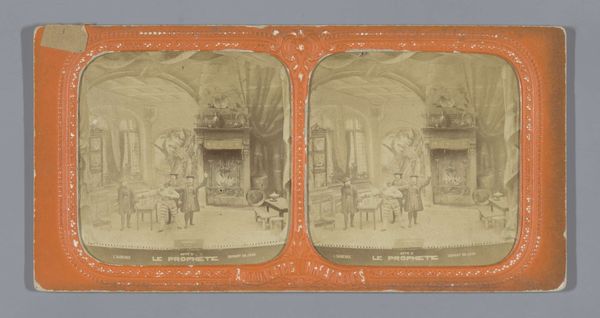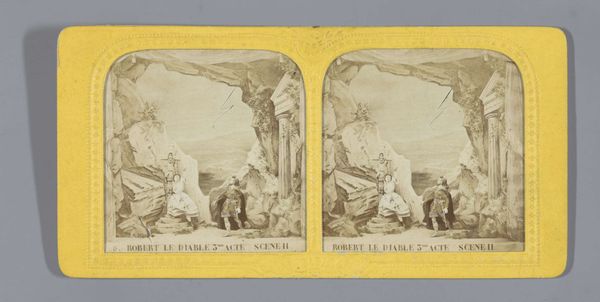
Dimensions: height 87 mm, width 178 mm
Copyright: Rijks Museum: Open Domain
Curator: This striking image, attributed to Charles Dauvois and dating from 1873-74, captures the first act, seventh scene of "Robert le Diable." It's a stereo card, primarily a photographic print, giving a theatrical tableau a surprisingly tangible presence. Editor: It certainly feels staged. There’s a theatrical artificiality about it—look at the backdrop; it’s clearly a painted canvas. The materiality is humble. I wonder about the set and costume design. Was this purely functional, or did it aspire to something grander? Curator: "Robert le Diable," a grand opera by Giacomo Meyerbeer, was a sensation in its time. This photograph offers a glimpse into how opera infiltrated popular culture. Reproductions like these made the spectacle accessible to a wider audience. This particular scene was, of course, recreated on many cards to capture audiences interested in possessing these opera narratives at home. Editor: And note the distinct labor divisions at play. Someone designed the costumes, likely using fabrics and trims sourced through complex networks of trade. The set construction is rough, visible in the cardboard cutout trees and hastily painted tent—highlighting that the glamour on stage masks intense preparation behind it. I mean look at that table, all ready and set! Curator: Absolutely. The photographic reproduction, too, highlights industrial processes making imagery reproducible on a mass scale. This democratization had implications for access to art and its ability to influence broader cultural understandings of historical events and figures portrayed on the opera stage. The history of representation, really, unfolds. Editor: Which shifts attention to the performers! They aren't idealized operatic archetypes here but tangible working-class individuals, in all their ordinary reality. What labor went into memorizing, staging, and enduring countless repetitions, so many hours to reproduce emotion? Curator: Precisely! By studying images like these, we see the intertwining of cultural aspiration and economic reality of operatic performance. We're looking at how artistic representation shaped perceptions of history but also was shaped BY popular tastes and purchasing powers. Editor: Agreed. It is striking to examine the multiple layers of production and consumption at play within this image, from initial performance and painted set to its distribution on this modest print and photograph card. A layered performance indeed.
Comments
No comments
Be the first to comment and join the conversation on the ultimate creative platform.



